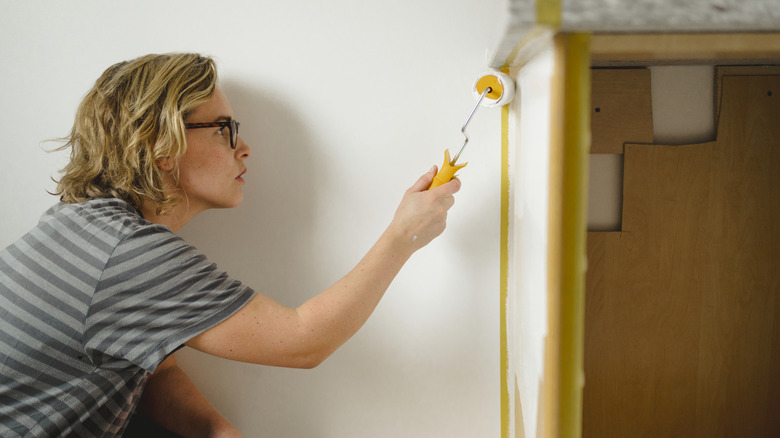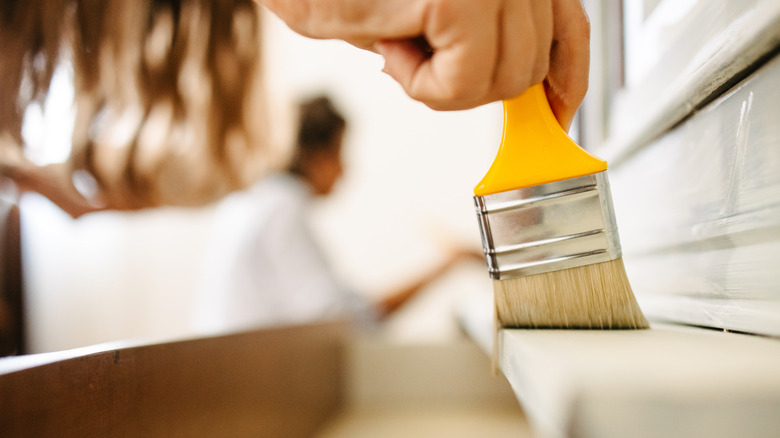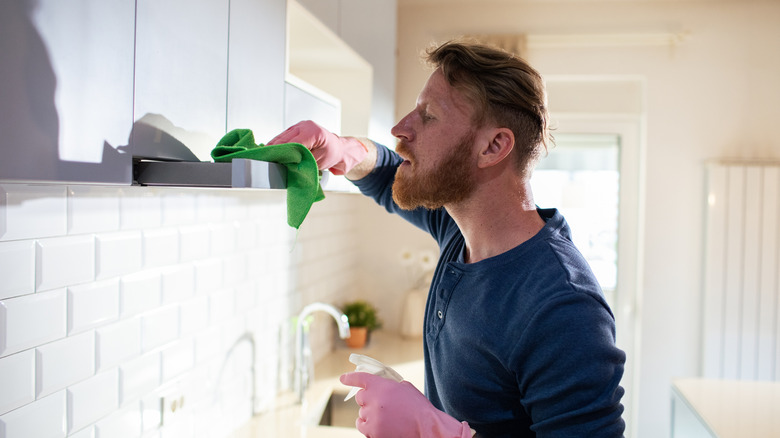Tips For Keeping Painted Cabinets Fresh (And How Long They Should Last)
Painting cabinets can be a great way to give any room a facelift on a budget, and potentially increase the value of your home. It seems like everyone has tips and tools for making painting kitchen cabinets easier, but how do you make your painstaking work last longer and look fresher? That's a tougher nut to crack. There are some common sense, everyday steps you can take to keep your cabinets in tip-top shape. From the products you use to clean them to minimizing their exposure to moisture and other elements to going the extra step with a top coat, there are plenty of ways to keep your cabinets looking their best.
Generally, a professional paint job — or a really great DIY one — will last eight to ten year. However, there are a few ways to make them last longer, not the least of which is keeping your paint handy so you can touch up the occasional ding or scratch. Take these steps to keep them looking beautiful for a decade or more with a little extra TLC.
Add a top coat to cabinets
Using the best paint for kitchen cabinets will give your furniture a good base, and usually does not require a top coat or sealer. Still, we all know that some parts of your home take more abuse than others. Maybe it's the cabinet doors under the bathroom sink or the kitchen island where your kids sit and swing their feet, but everyone has a spot that could use an extra layer of protection. A top coat can help.
There are a few things to know when heading down to the hardware store to choose a sealer. If you have white cabinets, keep in mind that oil-based sealers may impact the color of your paint — opt for a water-based sealer instead. Generally, though, any polycrylic or polyurethane meant to work with painted surfaces will give you the added layer of protection you need. If you have any chips or scratches, be sure to fix those first. Keeping your extra paint for touch-ups is always a good idea: Cabinets may need to be repainted for touch-ups after three to four years, and usually don't need to be fully repainted until a decade down the road. Then, follow the directions on your chosen sealer.
Regular maintenance and upkeep of painted cabinets
As with anything, providing regular maintenance and upkeep can help prolong the life of your cabinets — but the products you use during that process is important. You may be inclined to get out your favorite harsh spray and start scrubbing, but using warm water with dish soap and a microfiber cloth will ensure you cut through any grease or food products while being gentle on your paint. Harsh chemicals can damage the finish, so avoid these. Make sure you dry those cabinets, too, because moisture can be your enemy.
Kitchens and bathrooms can get hot and humid, and that can be the enemy of a good paint job. Proper ventilation and using your exhaust fan can help ensure moisture does not get the best of your new paint job. There are other small factors to pay attention to. Sun damage can fade paint, so if your cabinets get a lot of sun during a certain time of day, consider pulling the blinds or curtains. If you live in a family of cabinet-slammers, it may be time for a talk. But if you don't think your family can handle your new cabinets with care, consider DIYing soft-close hinges to thwart anyone who would treat your cabinets roughly.


